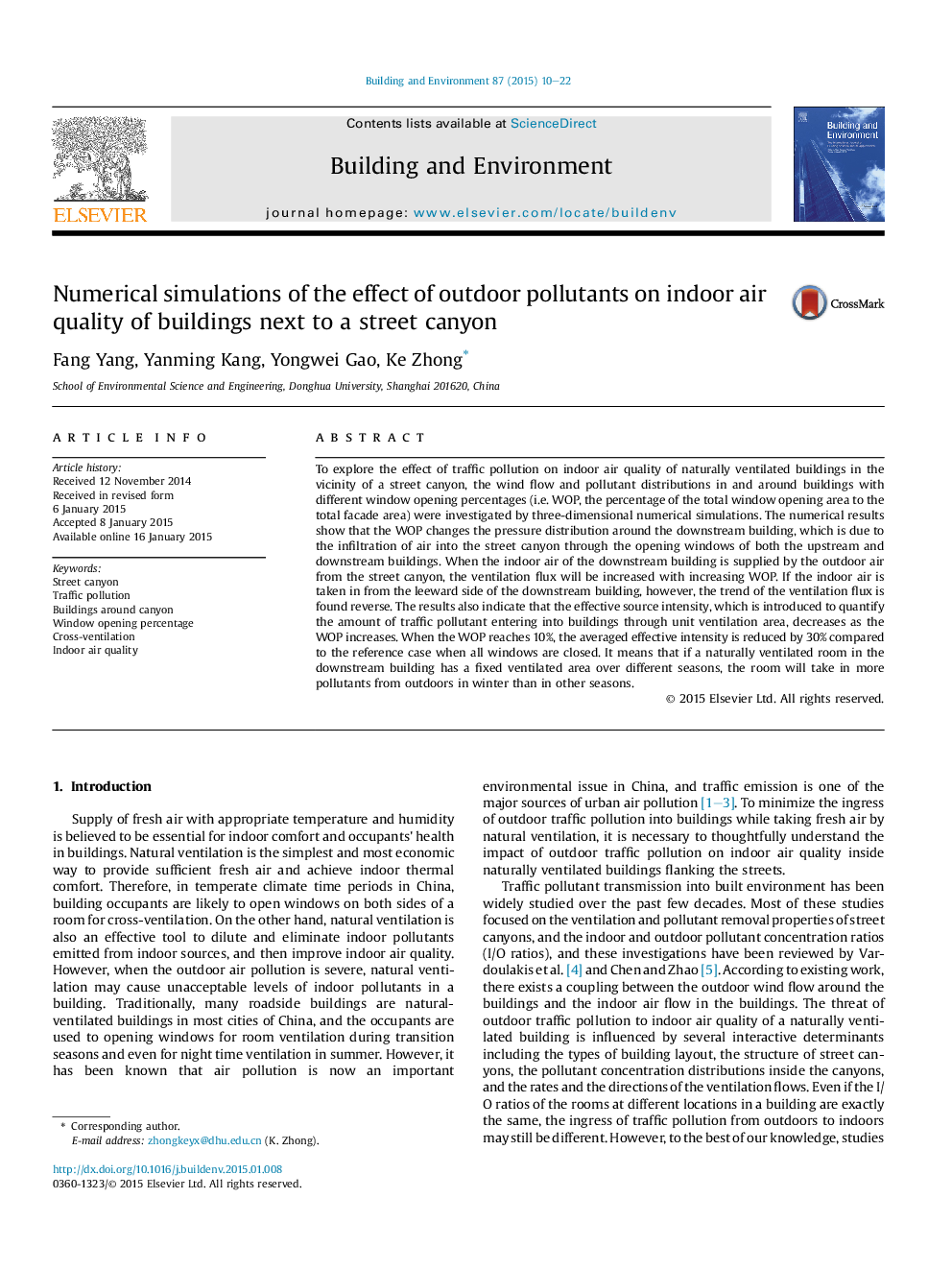| Article ID | Journal | Published Year | Pages | File Type |
|---|---|---|---|---|
| 248015 | Building and Environment | 2015 | 13 Pages |
•Impact of window opening percentage (WOP) on indoor air quality is studied.•The WOP has great effects on flow patterns and pollutant distributions in canyons.•Ventilation performance in rooms of a downstream building is influenced by the WOP.•Effective intensity is introduced to quantify the amount of traffic pollutant entering rooms.•Effective intensity of rooms in a downstream building drops with increasing the WOP.
To explore the effect of traffic pollution on indoor air quality of naturally ventilated buildings in the vicinity of a street canyon, the wind flow and pollutant distributions in and around buildings with different window opening percentages (i.e. WOP, the percentage of the total window opening area to the total facade area) were investigated by three-dimensional numerical simulations. The numerical results show that the WOP changes the pressure distribution around the downstream building, which is due to the infiltration of air into the street canyon through the opening windows of both the upstream and downstream buildings. When the indoor air of the downstream building is supplied by the outdoor air from the street canyon, the ventilation flux will be increased with increasing WOP. If the indoor air is taken in from the leeward side of the downstream building, however, the trend of the ventilation flux is found reverse. The results also indicate that the effective source intensity, which is introduced to quantify the amount of traffic pollutant entering into buildings through unit ventilation area, decreases as the WOP increases. When the WOP reaches 10%, the averaged effective intensity is reduced by 30% compared to the reference case when all windows are closed. It means that if a naturally ventilated room in the downstream building has a fixed ventilated area over different seasons, the room will take in more pollutants from outdoors in winter than in other seasons.
Graphical abstractFigure optionsDownload full-size imageDownload as PowerPoint slide
